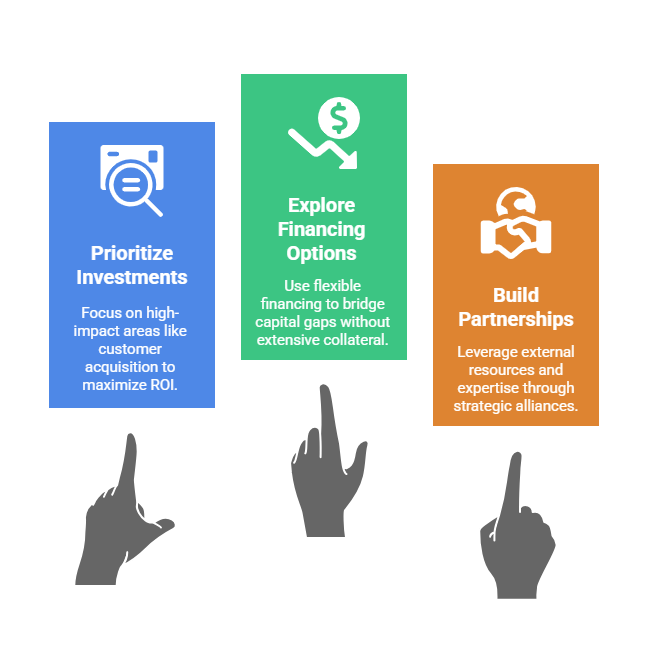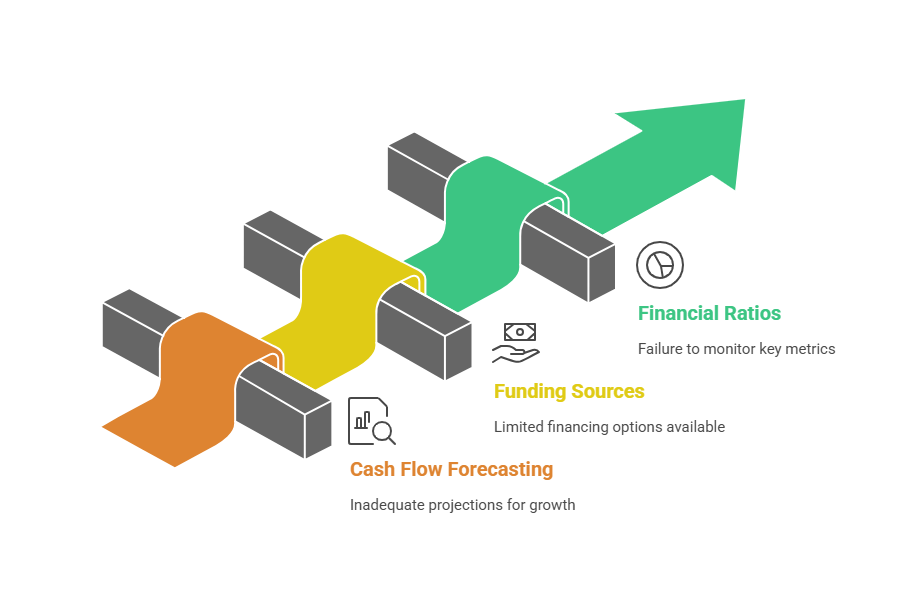Every entrepreneur dreams of building a thriving business that grows beyond its initial constraints. Yet, the harsh reality is that many small businesses hit a wall when it comes to scaling operations. Understanding why small businesses fail to scale is crucial for any owner looking to break through growth barriers and achieve sustainable expansion.
The journey from startup to scalable enterprise isn't just about having a great product or service. It involves navigating complex operational challenges, overcoming resource limitations, and building systems that can support increased demand. When businesses struggle to scale, it's often due to predictable patterns that can be identified and addressed early.
By examining common scaling failures, business owners can develop strategies to avoid these pitfalls and create a foundation for sustainable growth. The key lies in recognizing these challenges before they become insurmountable obstacles.
Essential Tips for Avoiding Founder Dependence
Essential tips for avoiding founder dependence can make the difference between a business that scales and one that remains stuck. Many small businesses fail because every decision, process, and customer interaction flows through the founder, creating an unsustainable bottleneck.
- Document your processes early: Create step-by-step guides for all critical business operations. This allows team members to handle tasks without constant founder input and ensures consistency across all business activities.
- Delegate decision-making authority: Identify capable team members and give them the power to make decisions within their areas of expertise. Start with smaller decisions and gradually increase their scope as trust and competence develop.
- Build redundancy in key roles: Ensure that at least two people can handle critical functions in your business. This prevents operations from grinding to a halt when someone is unavailable and reduces the founder's need to be involved in every aspect.
Critical Tips for Breaking Through Process Bottlenecks
Critical tips for breaking through process bottlenecks focus on identifying and eliminating the operational inefficiencies that prevent smooth scaling. Process bottlenecks often develop gradually as businesses grow, making them difficult to spot until they significantly impact performance.
- Map your current workflows: Create visual representations of how work flows through your organization. This helps identify where delays occur and which steps add little value to the final outcome.
- Automate repetitive tasks: Look for manual processes that consume significant time and consider automation solutions. Even simple automation can free up valuable human resources for more strategic activities that drive growth.
- Implement regular process reviews: Schedule monthly or quarterly reviews of your key processes to identify new bottlenecks as they emerge. What works at one scale may become inefficient as your business grows.
Smart Tips for Addressing Resource Gaps

Smart tips for addressing resource gaps help businesses secure the tools, talent, and capital needed for successful scaling. Resource constraints often force businesses to operate in survival mode rather than growth mode, limiting their ability to expand effectively.
- Prioritize high-impact investments: Focus your limited resources on improvements that directly support customer acquisition or retention. This approach maximizes the return on your investment and builds momentum for future growth.
- Consider flexible financing options: Explore funding solutions that align with your revenue patterns and growth trajectory. Alternative financing can provide the working capital needed to bridge resource gaps without requiring extensive collateral.
- Build strategic partnerships: Partner with other businesses to access resources, expertise, or markets that would be expensive to develop internally. These relationships can provide immediate access to capabilities that support scaling efforts.
Steps to Overcome Strategic Stagnation
Steps to overcome strategic stagnation require businesses to break free from outdated thinking patterns and embrace new approaches to growth. Strategic stagnation occurs when businesses continue using the same methods that brought initial success, even when those methods no longer support expansion.
- Conduct regular market analysis: Schedule quarterly reviews of your competitive landscape, customer needs, and industry trends. This helps identify new opportunities and threats that might require strategic adjustments to maintain growth momentum.
- Set specific scaling metrics: Define clear, measurable goals for your scaling efforts beyond just revenue growth. Include metrics like customer acquisition cost, lifetime value, and operational efficiency to guide strategic decisions.
- Develop multiple growth scenarios: Create detailed plans for different growth trajectories, including best-case, worst-case, and most-likely scenarios. This preparation helps you respond quickly to changing market conditions without losing strategic focus.
- Invest in strategic learning: Allocate time and resources for the leadership team to learn about scaling best practices through courses, mentorship, or industry associations. This knowledge investment pays dividends in better strategic decision-making.
Financial Management Strategies for Sustainable Growth

Financial management strategies for sustainable growth address the cash flow challenges that often derail scaling efforts. Many businesses fail to scale because they lack the financial foundation to support increased operations and customer demand.
- Implement robust cash flow forecasting: Develop detailed projections that account for the increased working capital needs of a growing business. This includes planning for inventory increases, extended payment terms, and higher operational costs that typically accompany scaling.
- Establish multiple funding sources: Diversify your financing options to include traditional funding, alternative financing, and revenue-based solutions. Having multiple options provides flexibility when unexpected opportunities or challenges arise during scaling.
- Monitor key financial ratios: Track metrics like gross margin, operating margin, and debt-to-equity ratios to ensure your scaling efforts maintain financial health. These indicators help identify potential problems before they become critical issues.
Technology Solutions That Support Business Scaling
Technology solutions that support business scaling can eliminate many of the operational constraints that prevent growth. The right technology infrastructure allows businesses to handle increased volume without proportional increases in staff or overhead costs.
- Cloud-based systems: Implement scalable cloud solutions for customer relationship management, accounting, and inventory management. These systems can grow with your business without requiring significant upfront infrastructure investments.
- Integration platforms: Use technology that connects different business systems to eliminate manual data entry and reduce errors. Integrated systems provide better visibility into operations and support faster decision-making.
- Mobile accessibility: Ensure your key business systems can be accessed from mobile devices to support remote work and field operations. This flexibility becomes increasingly important as businesses scale beyond single locations.
- Analytics and reporting tools: Invest in systems that provide real-time insights into business performance across all departments. Data-driven decision making becomes crucial when managing the complexity of a scaling business.
Understanding why small businesses fail to scale provides a roadmap for avoiding common pitfalls and building a foundation for sustainable growth. The challenges of founder dependence, process bottlenecks, resource gaps, and strategic stagnation are predictable obstacles that can be overcome with proper planning and execution.
Success in scaling requires a shift from the reactive, hands-on approach that many founders use in the early stages to a more systematic, process-driven methodology. This transition isn't always comfortable, but it's essential for businesses that want to grow beyond what the founder can personally manage.
The businesses that scale successfully are those that recognize these challenges early and take proactive steps to address them. By implementing the strategies outlined in this guide, business owners can position themselves to break through growth barriers and achieve the sustainable expansion they're seeking.

.png)






